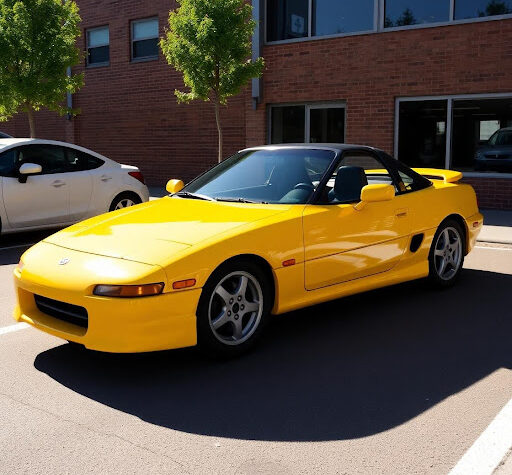
Millenials – those born between 1980 and 2000 – now form a sizeable and growing segment of the new car market. They are the most technologically savvy generation yet, having grown up with the Internet and the devices that connect them to the world. Connected vehicles are needed to meet the needs of this generation.
Prof. Dr. Eike Böhm, newly-appointed head of Quality Management Mercedes-Benz Cars, told Automotive Industries (AI) that the new A-class and the “Drive Kit Plus for iPhone” are designed with Millenials mind. Prof Böhm, was Vice President for Product Innovations & Process Technologies within Daimler Group Research & Advanced Engineering at the time of the interview.
Böhm: We have now integrated the iPhone comprehensively into the user experience of the new A-Class. Thanks to the integration of an in-house developed Mercedes-Benz “Digital DriveStyle App” together with the “Drive Kit Plus for the iPhone,” drivers will be able to access a set of the most relevant content from their iPhone through the in-vehicle display and enjoy safe and convenient opera¬tion of the iPhone via the controller on the center armrest.
AI: What other features will be accessible?
Böhm: This seamless integration of the iPhone into the vehicle, in conjunction with the new user interface design, means that Mercedes-Benz is now able to offer the Facebook generation its natural home. Along with Facebook, Twitter and so on, the “Drive Kit Plus for the iPhone” supports future Mercedes-Benz Apps, offering further services and content to transition the digital lifestyle into a Digital DriveStyle. These include a personalized internet radio by AUPEO!, advanced navigation software from Garmin and interactive experience involving “sharing,” “posting,” and the integration of music and other content from social networks, including text-to-speech.
AI: What is the next big challenge in getting information to drivers?
Böhm: The point is not to get the information to drivers, but to prevent driver distraction. This is one of our main goals. If you watch people in their car, you can often see that they are playing with their smartphones while driving – which is problematic in terms of safety. The art is to bring this functionality and information in a safe way to the driver.
AI: What are the key development issues?
Böhm: The car is becoming more and more like a mobile living room. People spend more time in their cars, and of course they want to use a lot of the devices they use at home. There are two main areas. One is getting information to the vehicle. The car will offer increasingly web-based services, individualization and connectivity. The other is integrating driver assistance systems. Regardless of the possibilities that exist in connectivity and infotainment, we are primarily concerned with customer usefulness and safety. In the next 10 years, the key development issue in this area will be to have a specific autonomous mode so the driver can use, example, the infotainment systems
without being distracted.
AI: What is state-of-the-art infotainment at Daimler today?
Böhm: Safe and convenient access to the Internet on the move is already available in a number of Mercedes-Benz models: the fully integrated multimedia system COMAND Online was introduced in 2011. We’ve presented state-of-the-art embedded solutions in Las Vegas earlier this year. On the other hand, we have Smartphone based solutions. Of course, we have to pursue both in parallel. The specific services depend on the customer’s wishes and the market.
AI: Are consumer expectations for connectivity the same in a smart car as they are in the S-Class?
Böhm: There is a difference in the average customer of a S-class and the smart mainly in the way he or she uses the Smartphone. Then again, in China the S-class customers are extremely young. In Germany and in Europe the S-class customers have another approach to smartphones, but on a worldwide basis they are very similar. Of course, we have to look also at the vehicle cost and the customer willingness to pay for services.
AI: What benefits would your co-operation with Google bring to the customer?
Böhm: Our co-operation with Google is a very exciting issue. We have a strategic co-operation that gives us access to the suite of application programming interfaces (APIs) – for example like Google Maps API for Business for the use of cloud-based, map-related applications in Daimler vehicles – and early access to other new APIs as they are developed. These applications significantly accelerate time-to-market in Mercedes-Benz passenger cars. The existing services, which include the Google Maps and Places APIs, will create an enhanced motoring experience for Mercedes- Benz drivers across the world.
AI: Automotive electronic components and their software are becoming ever more voluminous and complex. Are defects occurring more frequently as a result?
Böhm,: Definitely not! In the development of the vehicle there is an R&D process for testing the software. Daimler’s R&D department employs more than 1,000 software engineers making sure that the quality is on a very high level.
AI: What else can we expect in terms of innovation from Daimler in the future?
Böhm: Daimler is the most innovative automotive company in the world, with nearly 3,000 patents filed every year. Besides our core values such as safety and comfort, there are several fields of innovation we are working on in the next couple of years. One is reducing the weight of the vehicle. We focus on new materials and intelligent combination of materials, including carbon fiber. We also have to improve fuel consumption in the powertrain – through the use of combustion engines and hybrids and of course emission-free driving is also on our roadmap.




More Stories
TomTom’s Orbis Maps with 3D Lane geometry set new standards for mapping precision
Accelerating The Development of Hydrogen Vehicles & Infrastructure – Europe’s Biggest Players Meeting at Premier Event
Automotive IQ Announces the 15th Annual Automotive Functional Safety Week 2025